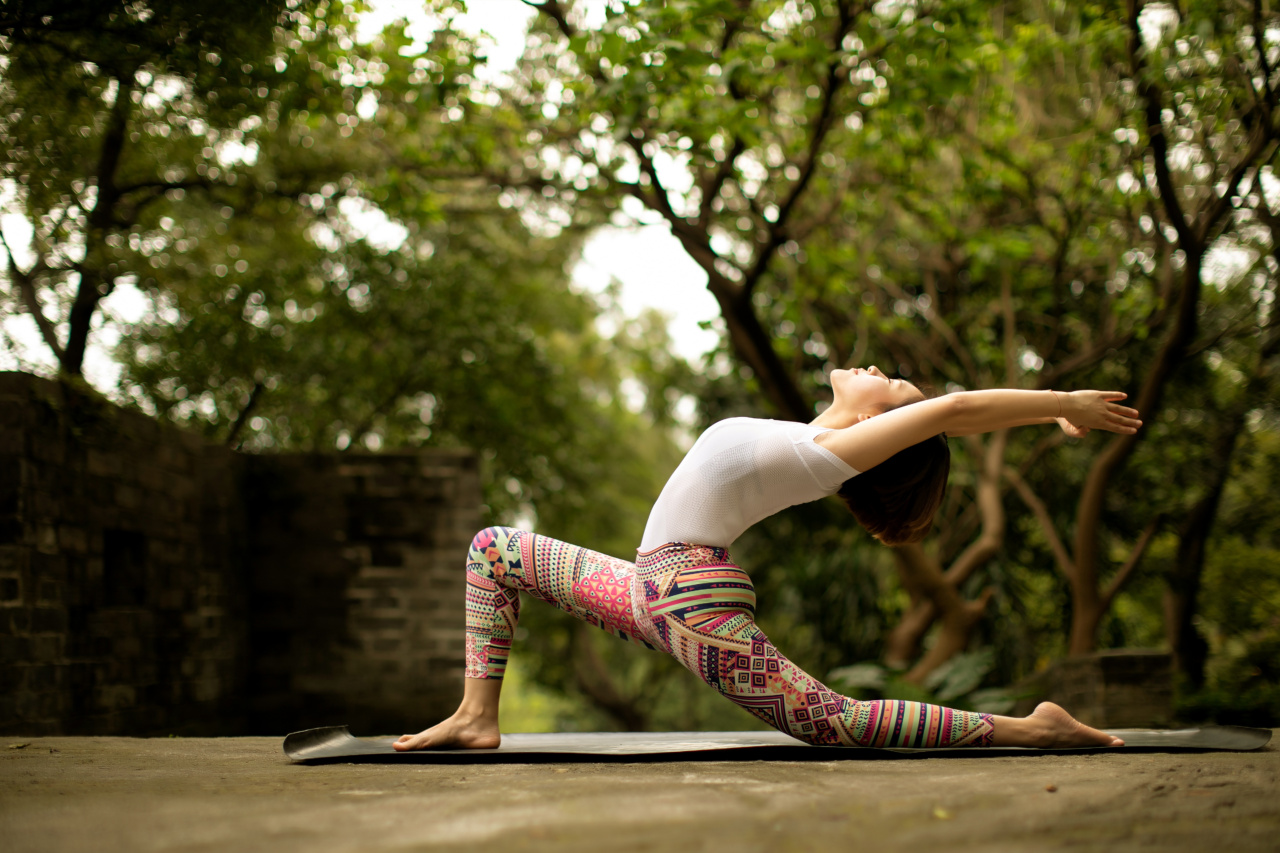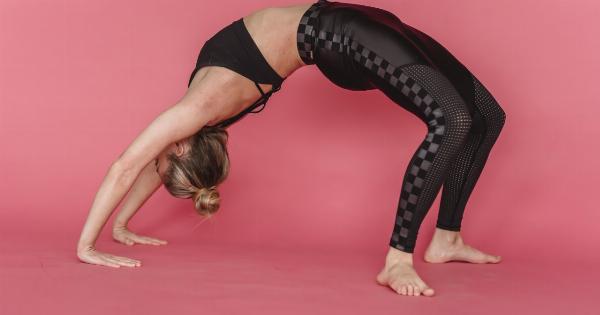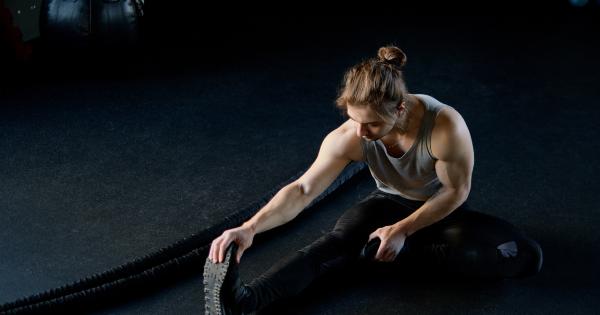Life can often be hectic, filled with deadlines, responsibilities, and various everyday stressors. It is crucial to find moments to unwind and take care of both your physical and mental well-being.
Yoga offers a fantastic way to relax, rejuvenate, and restore balance in your life. In this article, we will explore some basic yoga movements that can help you unwind, release tension, and find a sense of calm.
The Benefits of Yoga for Relaxation
Yoga is an ancient practice that combines physical postures, controlled breathing, and meditation to promote overall well-being. When it comes to relaxation, yoga has numerous incredible benefits. Here are some of the key advantages that yoga offers:.
1. Stress Reduction
Yoga can significantly reduce stress levels by activating the body’s natural relaxation response.
The combination of deep breathing, gentle movements, and mindfulness can calm the nervous system and decrease the production of stress hormones like cortisol.
2. Increased Flexibility
The gentle stretching and flowing movements of yoga help improve flexibility and joint mobility. By releasing tension in the muscles, yoga postures promote greater range of motion, allowing for increased relaxation and comfort.
3. Improved Sleep
Regular yoga practice has been linked to better quality sleep. The deep relaxation achieved during yoga can help calm a busy mind, release physical tension, and prepare the body for a restful night’s sleep.
4. Enhanced Body Awareness
Through yoga, we become more attuned to our bodies and develop a heightened sense of body awareness. This mindfulness allows us to identify areas of tension or discomfort and take steps to release them, promoting a sense of relaxation and ease.
5. Mood Enhancement
Yoga has been shown to boost mood and reduce symptoms of anxiety and depression. The combination of physical movement, conscious breathing, and focus on the present moment helps elevate mood and promote a sense of well-being.
Basic Yoga Movements for Relaxation
Now that we understand the benefits of yoga for relaxation, let’s explore some basic yoga movements that can help you unwind and find peace. These movements can be done individually or combined into a short sequence.
Remember to listen to your body and modify the poses as needed for your comfort.
1. Child’s Pose (Balasana)
Starting on all fours, bring your big toes together and separate your knees hip-width apart. Exhale and lower your torso between your thighs, letting your forehead rest on the mat. Extend your arms forward or alongside your body, palms facing up.
Hold this pose for a few deep breaths, allowing your spine to lengthen and your hips to release tension.
2. Cat-Cow Pose (Marjaryasana-Bitilasana)
Begin on all fours with your hands directly under your shoulders and your knees under your hips. Inhale, arch your back, lift your chest, and tilt your tailbone towards the ceiling. This is the cow pose.
On your exhale, round your spine, tuck your chin, and tuck your tailbone under. This is the cat pose. Alternate between these two poses, synchronizing your breath with movement for a few rounds.
3. Standing Forward Bend (Uttanasana)
Stand with your feet hip-distance apart. Exhale as you bend forward at the hips, lengthening your torso and folding over your legs. Let your head hang loose and grab onto opposite elbows if comfortable.
Allow the weight of your upper body to deepen the stretch in the back of your legs and release tension from your neck and shoulders. Take slow, deep breaths as you hold this pose for a few moments.
4. Supine Spinal Twist (Supta Matsyendrasana)
Lie on your back and bring both knees towards your chest. Extend your arms out to the sides in a T shape. Exhale as you gently lower your knees to the right side of your body, keeping both shoulders grounded.
Turn your head to the left if it’s comfortable. Breathe deeply into the twist, feeling the stretch in your lower back and spine. After a few breaths, repeat the twist on the opposite side.
5. Legs Up the Wall (Viparita Karani)
Sit sideways against a wall and slowly swing your legs up the wall as you lie down on your back. Adjust your position so that your tailbone is close to the wall. Let your arms rest comfortably by your sides or place your hands on your belly or heart.
Close your eyes and relax in this gentle inversion, allowing the blood to flow towards your heart and your body to release tension.
6. Corpse Pose (Savasana)
Lie flat on your back with your legs extended and your arms resting alongside your body, palms facing up. Allow your feet to fall open naturally. Close your eyes and breathe deeply.
Mentally scan your body and consciously release any areas of tension or tightness. Stay in this pose for at least 5 minutes, allowing complete relaxation of both your body and mind.
7. Seated Forward Bend (Paschimottanasana)
Sit on the floor with your legs extended in front of you. Inhale and lengthen your spine, reaching your arms up towards the ceiling. Exhale as you fold forward from the hips, reaching for your feet or ankles.
Keep your spine long and avoid rounding your back. If needed, you can bend your knees slightly to ease any strain. Take slow, deep breaths as you feel the stretch along the back of your body.
8. Bridge Pose (Setu Bandhasana)
Lie on your back with your knees bent and feet flat on the mat, hip-distance apart. Inhale, press your feet firmly into the ground, and lift your hips towards the ceiling.
Roll your shoulders underneath you and interlace your fingers, pressing your arms into the mat. Hold this pose for a few breaths, feeling the opening in your chest, hips, and spine. Exhale as you release your hands and slowly lower your spine back onto the mat.
9. Reclining Bound Angle Pose (Supta Baddha Konasana)
Lie on your back and bend your knees, bringing the soles of your feet together. Allow your knees to gently fall open towards the mat. You can place blocks or pillows under your thighs for support if needed.
Rest your arms alongside your body, palms facing up or place them on your belly or chest. Close your eyes and take slow, deep breaths, feeling the stretch in your groins and inner thighs.
10. Extended Triangle Pose (Utthita Trikonasana)
Stand with your feet wide apart. Turn your right foot out 90 degrees and pivot your left foot slightly inwards. Inhale and reach your right arm towards the right, bending sideways from your waist.
Keep your legs straight as you reach your right hand down, either placing it on your shin, ankle, or the mat. Extend your left arm towards the ceiling and gaze at your fingertips if comfortable. Take deep breaths in this pose before switching sides.
Conclusion
Incorporating these basic yoga movements into your routine can provide an effective way to unwind and find relaxation amidst the chaos of daily life.
Whether you choose to perform them individually or combine them into a sequence, take time for yourself and embrace the physical and mental benefits that yoga offers. Remember, yoga is a personal journey, so modify the poses as needed and listen to your body’s unique needs. Find your inner peace and enjoy the tranquility that these movements can bring to your life.






























